Understanding Heat Stress Risks
Key Prevention Strategies
H.E.R.E.

Hydrate
- Drink water every 15-20 minutes, even if not thirsty.
- During moderate activity in hot conditions, consume 1 cup (8 oz.) of water every 15-20 minutes.
- Avoid caffeine and sugary drinks as they contribute to dehydration.
- Use urine color as a hydration indicator; aim for pale yellow.

Educate
- Train workers to recognize early signs of heat stress: cramps, headache, fatigue, nausea/vomiting.
- Teach identification of life-threatening symptoms: red, hot, dry skin; rapid heartbeat; fainting; convulsions; high body temperature.

Remind
- Wear lightweight, light-colored, and loose-fitting clothing.
- Cooling PPE helps regulate body temperature.
- Rest in shaded areas frequently.
- Use sunglasses, wide-brimmed hats, and sunscreen for sun protection.
- Report heat illness symptoms early.

Enforce
- Watch out for co-workers, especially new team members.
- Avoid strenuous work during peak heat hours (11 a.m. - 3 p.m.) if possible.
- Implement work-rest cycles based on the heat index.
Hydration: The First Line of Defense

Stay hydrated and feel your best every day!

Recognizing Symptoms of Heat Stress
Early detection is key to preventing severe outcomes. Workers should be aware of the following symptoms:
- Excessive sweating or lack of sweat
- Muscle cramps
- Dizziness or fainting
- Nausea or vomiting
- Confusion or altered mental state
If these symptoms occur, immediately stop work, move the individual to a cool area, hydrate them, and seek medical attention if necessary.
Training and Emergency Preparedness
- Training: Train workers on recognizing early symptoms of heat stress, such as dizziness, cramps, headache, fatigue, nausea, excessive sweating, and confusion.
- Response Pan: Provide clear instructions on how to respond to heat-related emergencies
- Location: Ensure all workers know the location of water stations, shaded areas, and first aid supplies. Have ice packs and cooling equipment readily available on-site.
- Emergency Action Plan: Train supervisors on proper emergency response procedures for heat illnesses.
Life-Threatening Symptoms of Heat Stress
- Red, hot, dry skin
- Rapid heart rate
- Fainting
- Convulsions
- High body temperature
If you are experiencing any of these symptoms, seek medical attention.
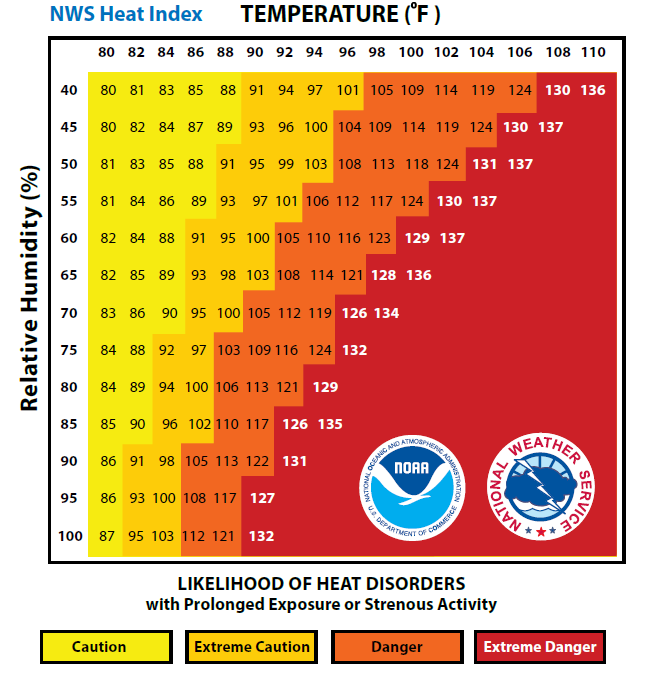
Combatting the Cold: Staying Safe in Extreme Weather Conditions

Cold Stress
- Watch for red, swollen, itchy skin around the face, and tingling, numbness, or pain in feet exposed to cold and wet conditions.
- Be alert for frostbite, causing burning, numbness, and pain.
- A loss of body heat leading to a core temperature below 98.6°F could result in hypothermia and can be fatal if it drops to 82°F or below.
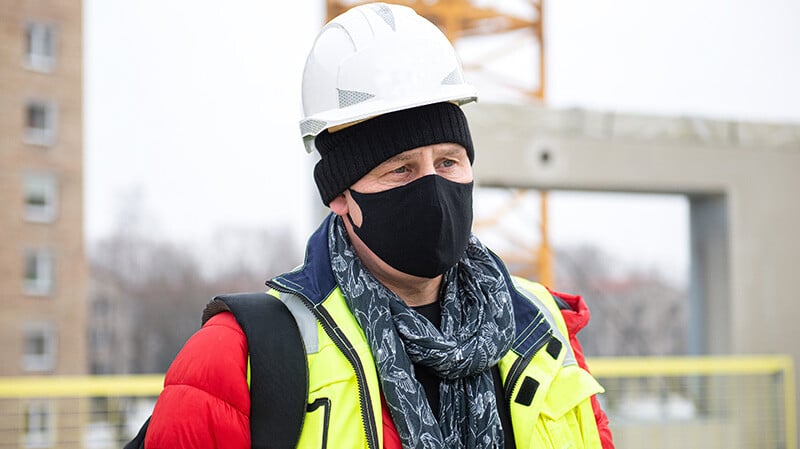
PPE Clothing
- Wear protective clothing with appropriate insulating properties.
- Be mindful that excessive sweating in insulated clothing can freeze at the skin's surface, creating a hazard.
- Use a layering system that allows for easy adjustment of insulation levels. S

Acclimatization
- Allow your body time to adjust to colder weather and winter elements.
- Start with shorter periods of outdoor work in cold conditions and gradually increase the duration as your body adapts to the temperature changes.
- Maintain a regular fitness routine to improve overall endurance and circulation, which can help your body cope better with cold temperatures.
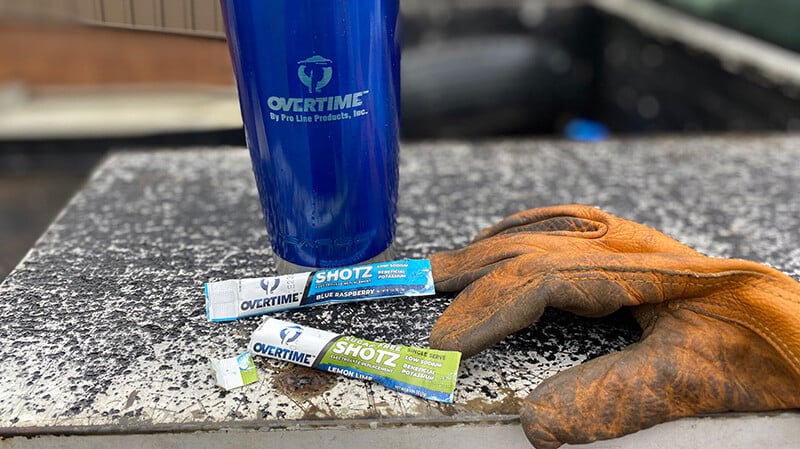
Hydrate
- Cold weather suppresses thirst sensation as the body prioritizes thermoregulation.
- Drink fluids and replace electrolytes regularly throughout the day, even if not feeling thirsty.
- Use electrolyte-rich drinks to replace lost minerals.
- Monitor urine color as an indicator of hydration status.

Replenishing the Body's Needs in Any Weather
Dehydration is a serious threat in cold weather, just as it is in heat. Research shows that sweat sodium concentration is significantly higher in winter, increasing the need for fluid and electrolyte replenishment during strenuous activity.
Wind Chill Dangers
Cold weather presents unique challenges for workers, with risks ranging from discomfort to life-threatening conditions. The Wind Chill chart illustrates how the combination of temperature and wind speed can dramatically increase the danger of cold exposure.
- 32°F to -15°F: Discomfort from cold, possible chilblains and frostbite on face and extremities.
- 20°F to -40°F: Hypothermia possible with prolonged exposure; frostbite occurs within 10-30 minutes.
- -40°F and below: Frostbite within 5 minutes! Hypothermia imminent without proper precautions.
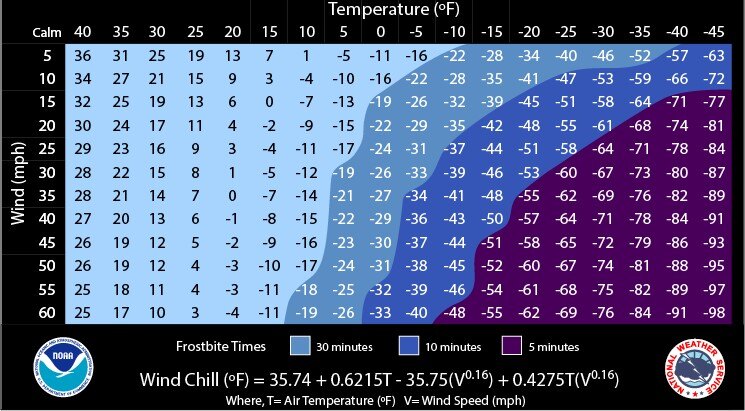

Emergency Response to Cold Stress
- For early cold stress signs: Cover and protect affected areas immediately. Use lotions or ointments for treatment. Remove wet clothing and warm feet slowly.
- For frostbite: Remove the person from the cold. Warm affected areas gradually without direct heat. Avoid rubbing to prevent further tissue damage. Seek medical attention.
- For hypothermia: Remove from cold immediately and call 911. Handle the patient gently to avoid disturbing vital organs. Apply warming to the body's core first, not extremities.
Why Choose OVERTIME?
- Workplace Safety: Ideal for maintaining hydration in demanding work environments.
- Daily Wellness: Maintain optimal hydration levels for overall health and well-being.
- Sugar-Free and Low-Sugar Options: Replenish electrolytes without the crash from added sugars. For a little added sweetness, try our low-sugar freezer pops or Tiempo Extra.
- Low Sodium: Hypertension friendly
- Beneficial Potassium: Relieves muscle cramps
Experience the OVERTIME difference today and elevate your hydration to the next level. Whether you're an athlete, a hard worker, or someone who understands the importance of proper hydration, OVERTIME is your partner in peak performance and wellness.
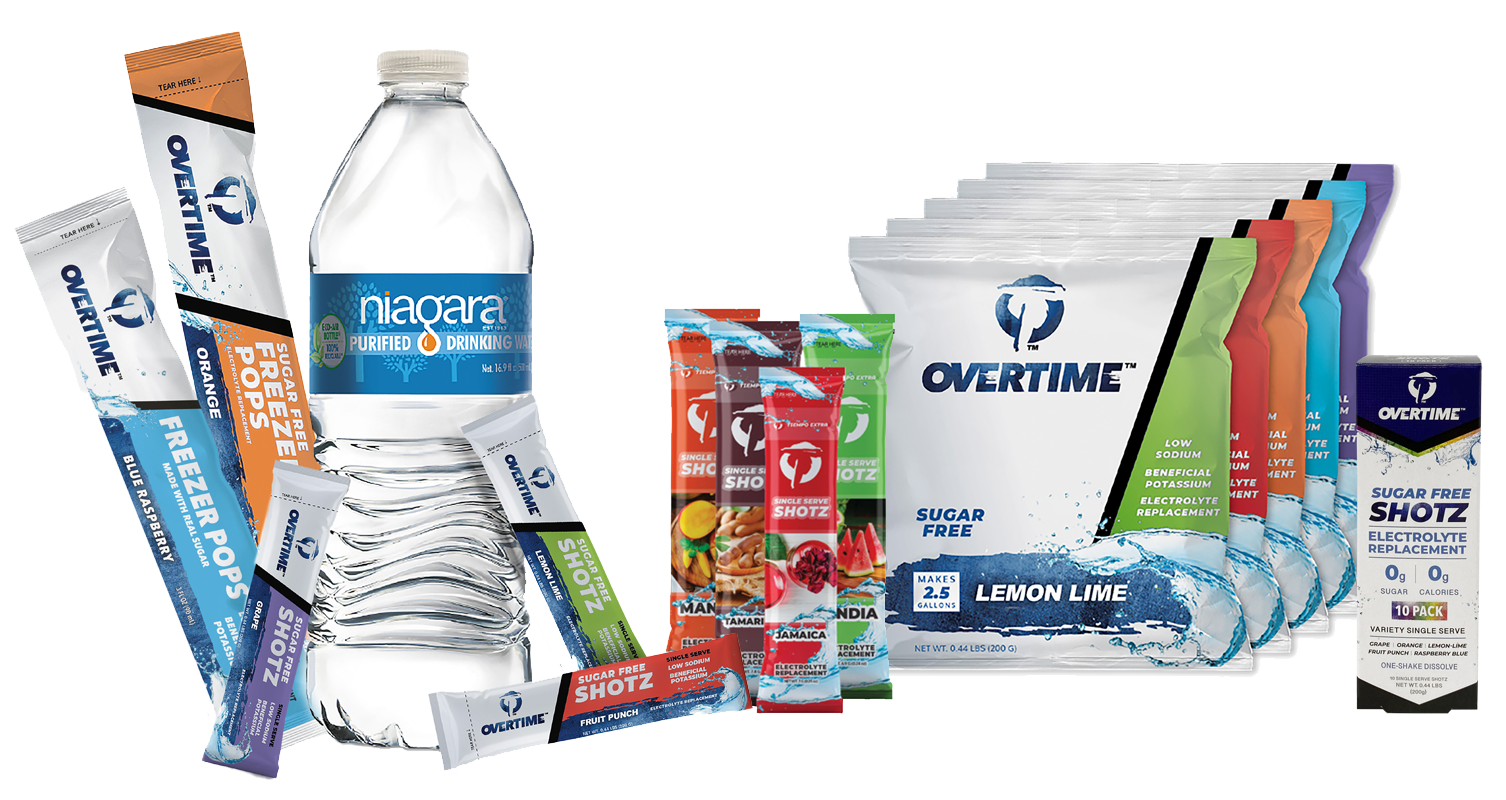
Get the latest from OVERTIME
Sign up for exclusive offers & the latest news from the OVERTIME team!
